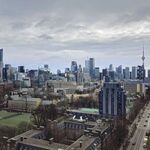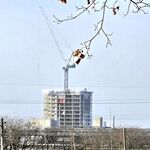If the TTC or Metrolinx had any form of respect for the tax-weary citizens of Ontario. which they don't, the ONLY option would be to extend the SRT using SkyTrain.
SkyTrain is a proven, safe, comfortable, reliable, fast, high frequency, and efficient rapid transit system. On only has to look at Vancouver's SkyTrain to see that. It has been an incredible success and due to it's automation each trip on the Expo Line costs Translink a paultry 77 cents per rider. Considering Toronto and the TTC are always bitching about the lack of operational funding, SkyTrain is a logical choice. It is also manufactured by Bombardier which is the TTC defacto supplier and is a requirement for any funding coming from Queen's Park and everyone, including Bombardier itself, knows it.
Just because the TTC screwed up the SRT and has left it to rot has nothing to do with the technology and everyone to do with the TTC, Even the beloved Steve Munro speaks highly of the Vancouver SkyTrain system and clearly states that the reason for SkyTrain success is due to Translink and the reason for the SRT's failure is due to the TTC. It is also very reliable even in snow and it doesn't even have the heating mechanisms installed.
It is the most cost effective option for Eglinton due to the garage/maintenance centre already existing {yes it will needed to be expanded but that is far cheaper than building a brand new one}, there would be no massive funds needed to redo all the current stations which LRT will require. Remember due to the stupidity of using LRT not only will the tracks need to be replace, they will have to build all the overhead catenary wiring, and all the stations will have to have to "raise the roof" on the current SRT stations to accomodate the catenary. All this just for sake of Miller's wet dreams over LRT. All they have to do is put in the heating mechanisms, upgrade the one small section under the GO line to accomdate the new MK111 cars and problem solved.
With the hundreds of millions saved they could elevate the line from DM to Kennedy and make it one continous line, to say nothing of not having to shut down the system for years. It will also have over twice the capacity of LRT with similar sized stations due to the Eglinton line having to run at grade which essentially limits frequency to every 180 seconds per direction at the maximum. SkyTrain stations could be just 70 meters underground and still have far higher capacity than 100 meter LRT stations.
Toronto is building the most expensive LRT line on the planet yet using LRT will result in the lowest capacity and highest operational costs of any of the 4 train technologies of subway/metro, SkyTrain, LRT, or monorail.
Heads should be rolling over such an obscnely high cost line which will be the most expensive to operate and build, and be slowest and most unreliable due to running that small at grade section.




